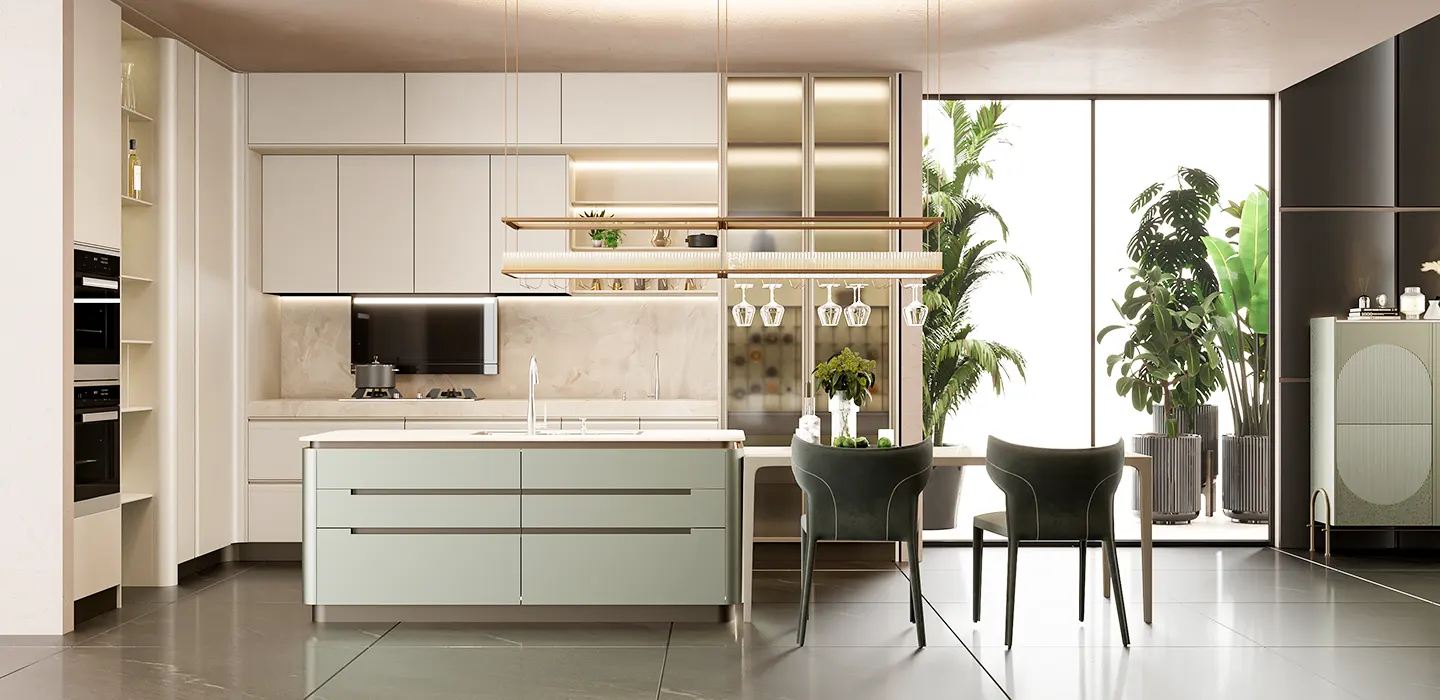The home improvement business is in a constant state of flux, but one area that is growing quickly is the kitchen remodel business. More and more homeowners are turning their kitchens into culinary wonderlands, refining their food preparation areas into beautiful and functional gems. A kitchen is the heart of the home and remodeling is the best way to revitalise a home, improving its value and enhancing its beauty by blending form and function.
A kitchen remodel can be anything from a minor facelift to a full gut and reinstallation, and most of what we do falls between those poles. We have made everything from replacing a refrigerator and countertops to installing walk-in pantries and top-of-the-line appliance packages. Each of these projects is a mix of design, planning and construction.
The kitchen remodel business is booming as homeowners demand increasingly appealing and personalised kitchens. Success in this competitive market requires a strategy, dedication, and a love for beautiful and functional kitchens.
- The importance of a well-designed kitchen
- Steps to starting a kitchen remodel business
- Essential skills and qualifications for running a successful kitchen remodel business
- Building a team of professionals
- Creating a business plan for your kitchen remodel business
- Marketing and advertising strategies for a kitchen remodel business
- Managing clients’ expectations and providing great customer service
- Successful project management in the kitchen remodel business
- The future of the kitchen remodel industry
- Conclusion
The importance of a well-designed kitchen
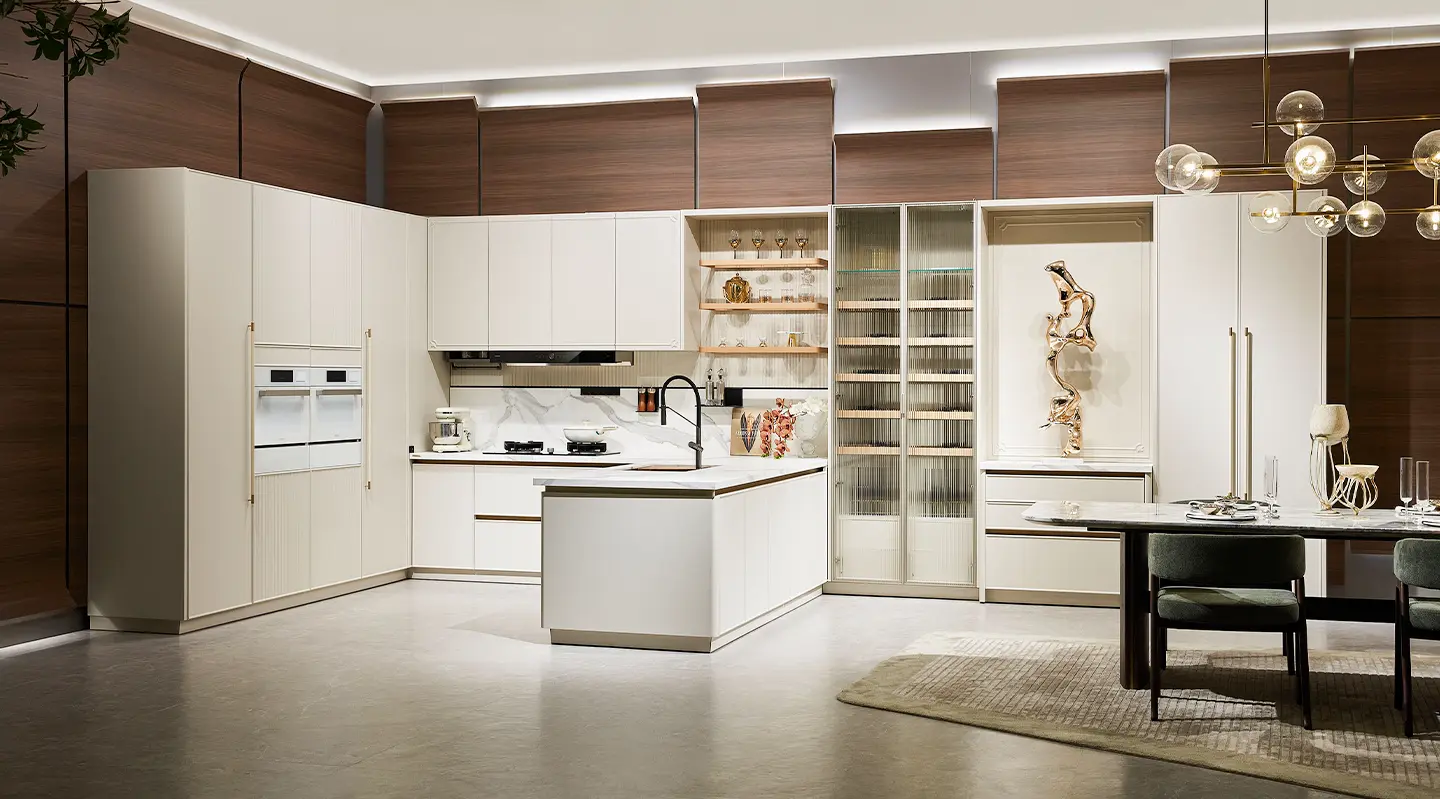
A good kitchen should not only work properly and make good food and conversation, but it should also reflect the life and aspirations of the homeowner: their lifestyle, their taste and their priorities. In modern homes, the kitchen has become the nerve centre of the 21st-century household, a family, a workplace and a laboratory of culture.
Well-designed practicalities, for example, a room that flows and maximises space, a kitchen with good storage or seamless integration of appliances, is capable of influencing the user experience and enhancing the atmosphere of a space. Good design can also be about elements such as the use of natural light, high-quality finishes and ergonomic detail.
Additionally, since a properly outfitted kitchen can dramatically boost a home’s resale value, the kitchen remodel business is a godsend to homeowners wanting to update their property’s aesthetic value and curb appeal.
Steps to starting a kitchen remodel business
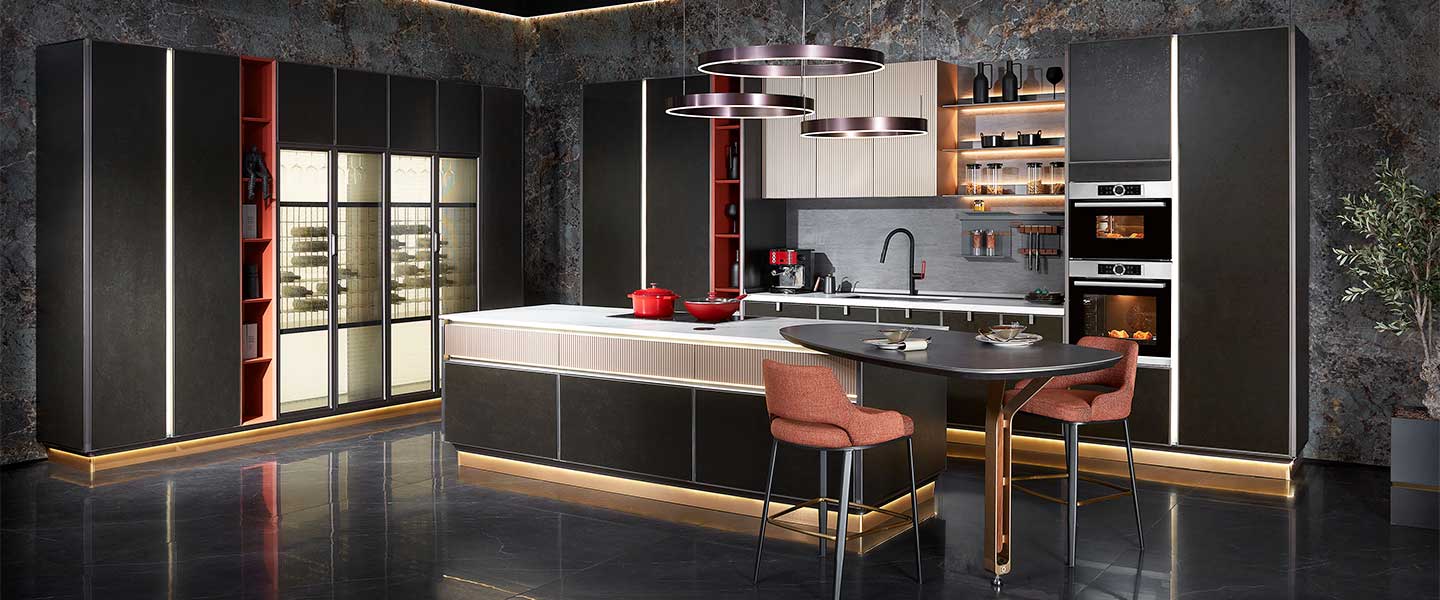
Starting a kitchen remodel business can be a rewarding endeavour, but it takes careful planning, dedication and a clear understanding of the ins and outs of the industry. The following steps will help you get started.
Build up the necessary skills and knowledge: Get your hands dirty and learn the trade, either through formal education (construction trades, architectural, drafting, or engineering), apprenticeships or working for an established remodelling company. Develop expertise in design principles, project management, construction operations, and building codes and regulations.
Get the licenses and permits you need: Make sure you understand the codes and regulations that apply to home improvement in your area. Apply for the proper licence, permits, and certification you need to operate legally and meet all applicable safety regulations.
Prepare a business plan: Write a business plan articulating your vision, target market, services, pricing strategy, marketing efforts, and projections of revenues and expenses. This document will guide the development of your business and be helpful if you decide to request funding.
Secure funding: Assess your financial situation to determine how much money you need to start and continue your business. Research funding sources, such as personal savings, loans or investors, to make sure you have enough money to buy equipment, supplies and cover operational costs.
Develop relationships – network: Get to know your suppliers, contractors and other people in your field. Connect with designers, architects and other providers of complementary services to create a network that can help you complete your projects and expand your service offerings.
Set up your business infrastructure: Form your legal business entity, obtain all relevant insurances, find a physical location or office space, purchase the software, equipment and tools necessary to run your business efficiently.
Create a marketing plan: Have a strategic marketing plan to attract new customers and make your business well-known in the local market. Use social media, print ads, networking events, and word-of-mouth to promote your knowledge and provide your services.
If you can complete these steps and provide exceptional quality products and service, you’ll be ready to run a kitchen remodelling business that will stand out in your area.
Essential skills and qualifications for running a successful kitchen remodel business
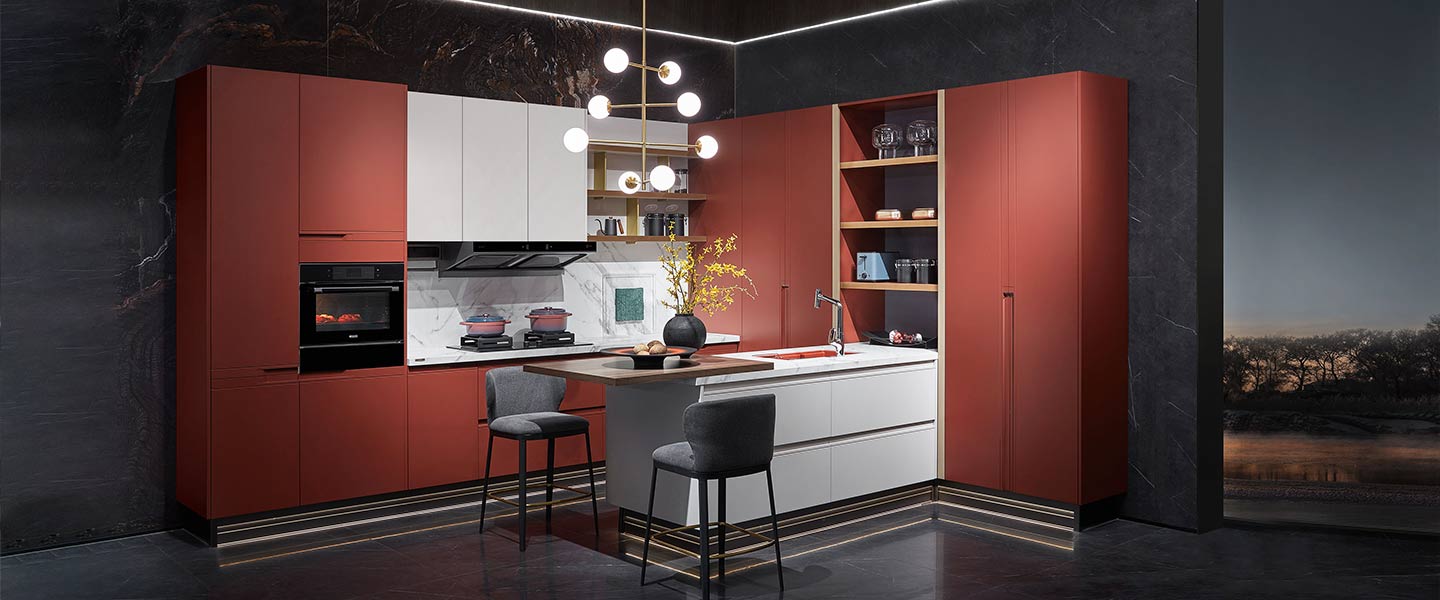
It takes a special combination of skills and qualifications for a person to be successful at running a kitchen remodel business. These include a range of both technical and business abilities. Here are some key attributes for success in this arena:
Design and imagination: A good sense of design and a good eye for aesthetics is very important in this business. You need to be able to visualise what makes for a beautiful kitchen, while keeping practicality in mind.
Construction knowledge and technical skills: Proficiency in construction techniques, materials, and building codes is required. Knowing how plumbing, electrical, carpentry and other trades work is important to execute the project and to guarantee safety.
Project management: Effective kitchen remodel businesses are built around a strong foundation of project management skills. To complete projects on time and within budget, strong organisational skills, attention to every detail, and the ability to coordinate and oversee multiple tasks and stakeholders at the same time are required.
Communication and interpersonal skills: Good skills in communication are important for building rapport with clients, managing expectations, and ensuring that all stakeholders understand the project’s requirements. Good listening, negotiating and conflict-resolution skills are invaluable in developing positive relationships with a wide range of clients.
Business savvy: The ability to operate a successful and legal business that makes money is a must. This includes understanding how to price goods and services and negotiate contracts, as well as managing risk and cash flow.
Problem-solving and adaptability: This is an industry where you need to think on your feet, figure out how to make things work, and remain flexible when challenges arise.
Continued education and professional development: Staying abreast of new trends, materials and techniques. A commitment to continued education and professional development demonstrates a commitment to maintaining and advancing your skills and knowledge within your industry.
While all these skills and certifications are excellent qualifications to have, a kitchen remodelling team is a complex beast that can be made round if you have the right people and they are well-rounded with complementary strengths.
Building a team of professionals
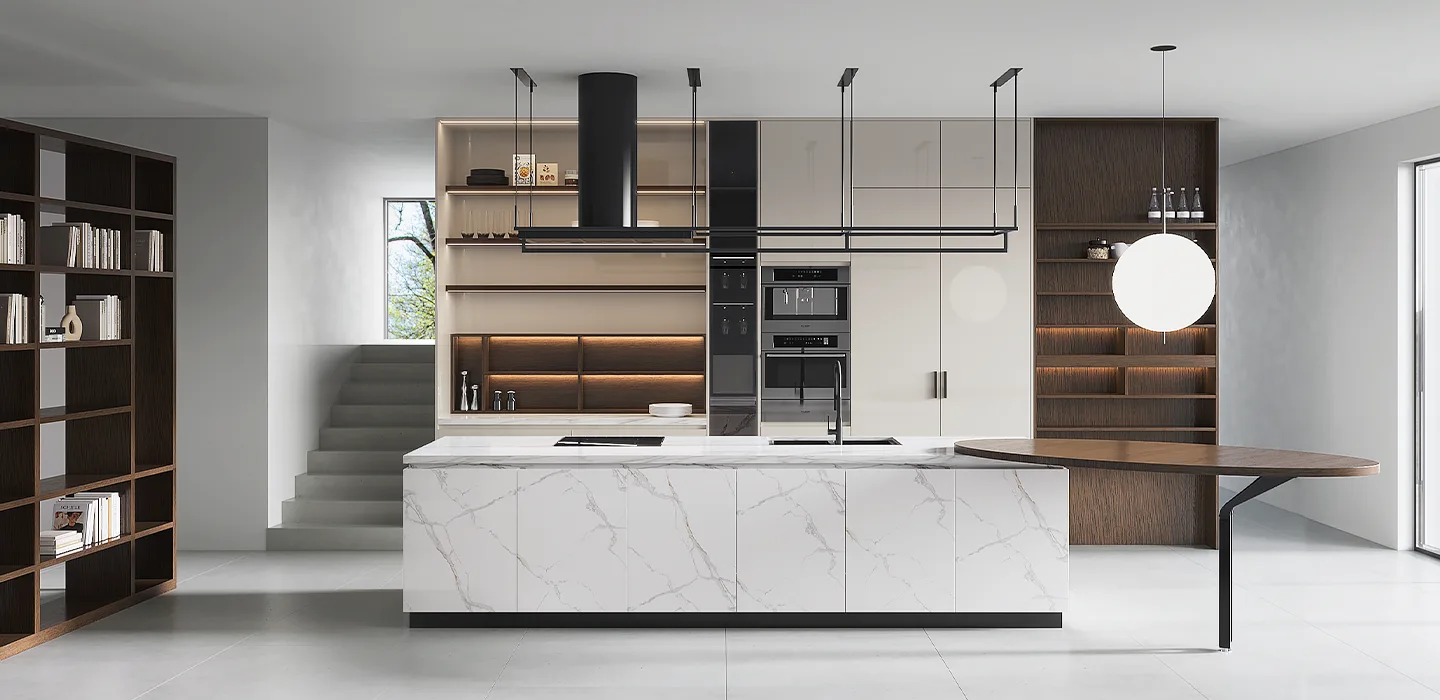
Even though you’re the boss and you know best, running a kitchen remodel business is not a solo operation, especially if you want to do the job well. To complete the task correctly and on time, you will need to form a team. Important considerations when building your dream team include:
Identify your core competencies: Figure out what you’re good at and what you’re not. Then, based on the gaps you find, figure out who else needs to be on your team to fill those specialisations that would round out your skillset.
Hire craftspeople: Assemble a team of carpenters, electricians, plumbers, tile setters, and other tradespeople with appropriate licences, certifications and experience to deliver quality work.
Partner with designers and architects: Work with talented designers and architects to produce beautiful kitchen designs. They can help with space planning, material selection, and incorporating current trends to take your projects to the next level.
Hire project managers: Project managers who have years of remodelling kitchens successfully will be one of the most valuable assets that one can have in the kitchen remodelling business. They can oversee the whole process of the project and can manage the different stakeholders like the architects, interior designers, contractors, suppliers, clients, etc and ensure that the timelines are being followed and the budgets and the quality of the project is not compromised.
Bring on the back office: Office staff and non-consulting personnel can help to keep the engine running. From scheduling appointments or screening phone calls to filing paperwork or helping to answer questions or escalate concerns, a team of support personnel can free up your core team to focus more on the project at hand.
Encourage collaboration: Establish an environment where communication, sharing of knowledge and the ability to work together can thrive. This will help to leverage creativity, problem solving and a shared drive for excellence.
Training and development: Make sure your team members receive ongoing training to continuously develop their skills. Attend various seminars and conferences, and offer training, workshops and certification programmes to help them stay current and get an edge over the competition.
Put together a team of people who are good at what they do and who know each other’s strengths, you’ll be able to cut down on redundant work, coordinate better, and in the end you’ll end up with kitchen remodel projects that your clients will be thrilled with.
Creating a business plan for your kitchen remodel business
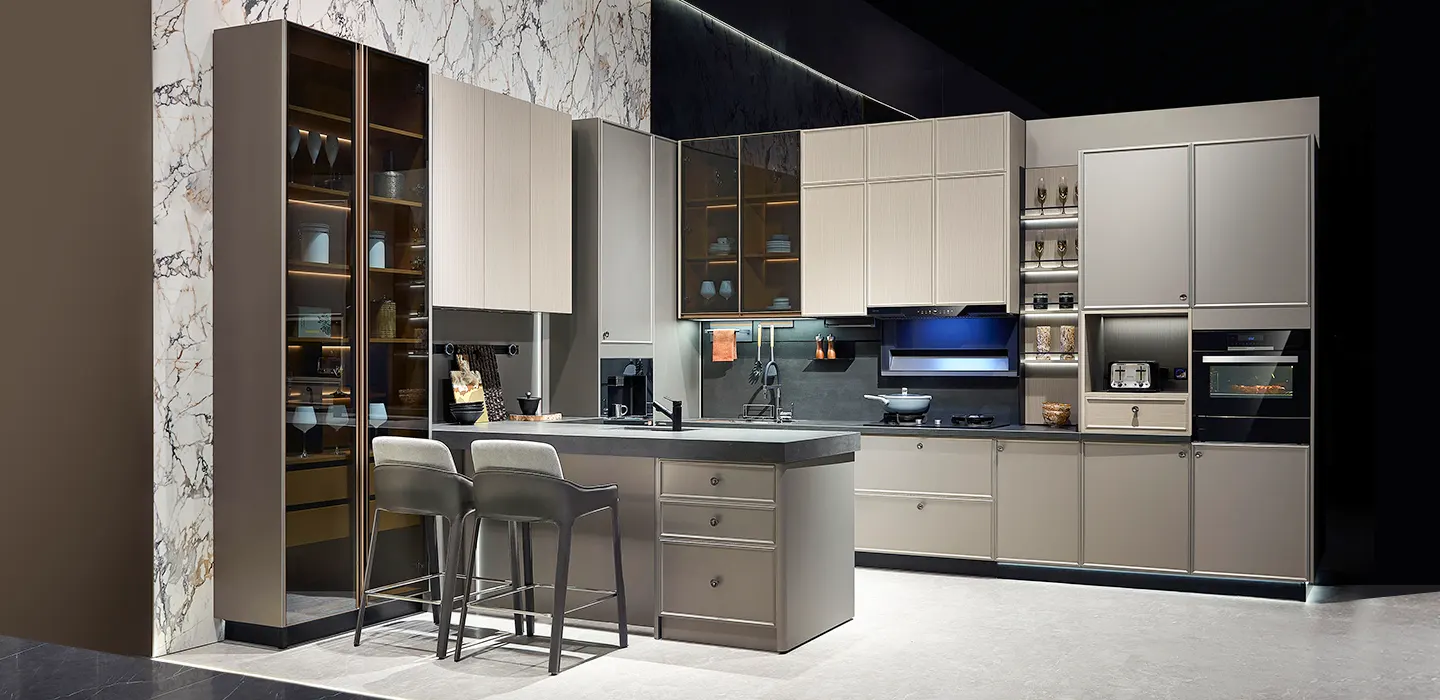
A well-thought-out business plan is the key to a successful kitchen remodel business. We are going to take a look at what exactly a business plan is and how to create a kitchen remodel business plan. The business plan is a document that helps you in all your decisions, explains the strategy you will use to complete your goals, and provides a framework for the development of the kitchen remodel business. Here are the elements that should be included in a kitchen remodel business plan:
Executive Summary: This paragraph is a brief summary of your business. It introduces your mission, vision and USP and should capture the essence of your venture to convince the reader to keep reading.
Company Overview: Provide an overview of your kitchen remodel business, including the services you offer, your target market, and the competitive environment. Discuss your company’s strengths, core values, and unique approaches or specialties.
Market Analysis: review the kitchen remodel market, including trends, consumer preferences and the competitive environment in your geographic area, and identify opportunities and threats for your company, and outline a plan how your company could respond to market demand.
Services and Products: Describe your kitchen remodelling services and products in detail. This can include design consultations, project management, installation, and the sale of custom appliances or fixtures.
Marketing and Sales Strategy: What is your marketing and sales strategy, including how you will brand your business and your products and services, how you will advertise your business and should you, how you will attract and retain clients, and what your unique selling propositions are. How will you differentiate your business from your competitors?
Operations Plan: Discuss your operations processes – including project management approaches, quality control, materials sourcing, and sub-contractor management. Consider staffing, equipment requirements, and inventory.
Management and Organisation: Who is your leadership team? How much experience do they have? What training or relevant qualifications do they have? How is your business organised? What roles and responsibilities do your team have? How do you intend to grow or expand your business in the future?
Financial Projections: Create realistic financial projections, including start-up costs, operating expenses, revenue forecasts, and projected profits. Support your estimates with assumptions and rationale, and detail where you’ll get the money and how you’ll manage cash-flow.
Appendices: Any supporting documents such as resumes of key personnel, market research data, licences and permits or any other information that supports your business plan.
A final note: your business plan is a living document. It will need to be reviewed and updated over time as conditions change in the marketplace, in your strategies, or as your goals for the business shift. The better your business plan is now, the more likely it is that your business will be successful. Investors, lenders and others who are approached for money will take comfort in how thorough you are. Your goal is to encourage them to say yes.
Marketing and advertising strategies for a kitchen remodel business

When it comes to the kitchen remodel industry, one of the most important aspects for gaining new clients and developing a brand is the ability to market and advertise successfully. Here are some strategies that are tried and true.
Build your online presence: It goes without saying that nowadays it is important to invest in a good website with a strong social media presence to promote your business and services. This includes search engine optimisation (SEO) and content creation that demonstrates your experience and portfolio of work.
Local marketing: You can use local marketing to generate business from your service area. Examples of local marketing include local print advertising, direct-mail campaigns, networking with complementary businesses in your area (eg, real estate agencies, interior design firms), and sponsorship of community events.
Use referral programmes: Happy clients make for great brand advocates. Create a referral program that encourages current clients to recommend your services to their friends and family. Word of mouth is one of the most powerful marketing strategies in home improvements.
Portfolio of kitchens: You should have a wonderful portfolio of kitchens remodelled in your own style. Show pictures of the before and after the changes, to let people know what they are buying into. Have a website, social media channels and even laminated cards you can take with you when visiting potential clients.
Attend home shows and events: Visit and participate in home shows, trade fairs and community events to promote your services. These types of events can give you the opportunity to meet with homeowners, demonstrate your services and generate leads.
Use influencer marketing: Collaborate with a local influencer, blogger, or social media celebrity with a large following of home improvement or design aficionados. Create sponsored content or product placement to reach your target audience.
Run email marketing campaigns: Collect leads from prospective clients and past customers by creating an email list and send them newsletters, promotions, or news about industry trends or new services. Email marketing is a great way to build relationships with leads and stay top-of-mind for customers.
Free consultations or seminars: Offer to come to their home or business to provide a complimentary design consultation or host an in-store seminar on the latest kitchen remodelling trends and best practices. This will validate your expertise while also giving you face time with your clients and an opportunity to build a relationship with them.
Invest in local advertising: Set up targeted ads through Google Ads or on social media for people near you looking for a kitchen remodelling service.
Keep in mind that your marketing and advertising strategies will often be most effective if they leverage multiple channels and tactics. Be sure to continuously track and analyse your campaign effectiveness, and make changes as needed in order to optimise your ROI.
Managing clients’ expectations and providing great customer service

What we do now as a kitchen remodel business heavily revolves around client expectations and customer service, which make all the difference between success in the long term and having a good reputation. Here are a few tips for creating a positive experience for your clients from start to finish:
Open communication: Agree upfront to transparent communication with your client and maintain clear lines of information flow throughout the project. Clarify the scope of the work, timelines, budget and any challenges or constraints that might limit your ability to deliver on the client’s expectations. Encourage the client to raise questions or express concerns, and provide them with timely responses in a professional and courteous manner.
Set achievable goals: Tom Peters and Mary Poppendieck propose that you must be clear and honest about what you can deliver within the client’s budget and timetable. Try to manage their expectations by giving them accurate estimates and setting realistic goals as opposed to unrealistic expectations that might be difficult to meet.
Detailed contracts and documentation: Draw up detailed contracts and project documentation that spell out all the details of the project, from specification and materials to pricing and contingencies. Ensure that both parties agree to the conditions.
Frequent progress reports: Keep clients informed about the progress of the remodel. Provide regular updates, such as photos, videos or site visits, to show them what is happening and provide an opportunity to answer questions or concerns.
Flexibility and problem solving: Unexpected issues or changes may arise during the course of the kitchen remodel project. Address these situations in a solutions-oriented manner, and work with your clients to come to acceptable resolutions that meet their requirements and expectations.
Quality control and attention to detail: Implement stringent quality-control measures to guarantee that all components of the project are completed to the highest craft standards and in compliance with industry best practices. Pay attention to details, as small things can make a big difference to the client’s experience.
Post-project follow-up: Post-completion, do a detailed final walkthrough with the client, taking care of any remaining issues and ‘punch list’ items. Follow up periodically to make sure the client is happy with the project, and address any problems that may arise after the project is finished.
Get testimonials and feedback: Send out surveys or interview your clients to get feedback. If you can get positive testimonials and reviews, use them as marketing tools. If clients have any criticism, take it seriously and see how you can change your service offerings.
Putting your customer first, meeting their needs, and delivering excellent customer service will help you create a base of loyal clients, foster strong client relationships, and generate a reputation for providing excellent kitchen remodelling services.
Successful project management in the kitchen remodel business
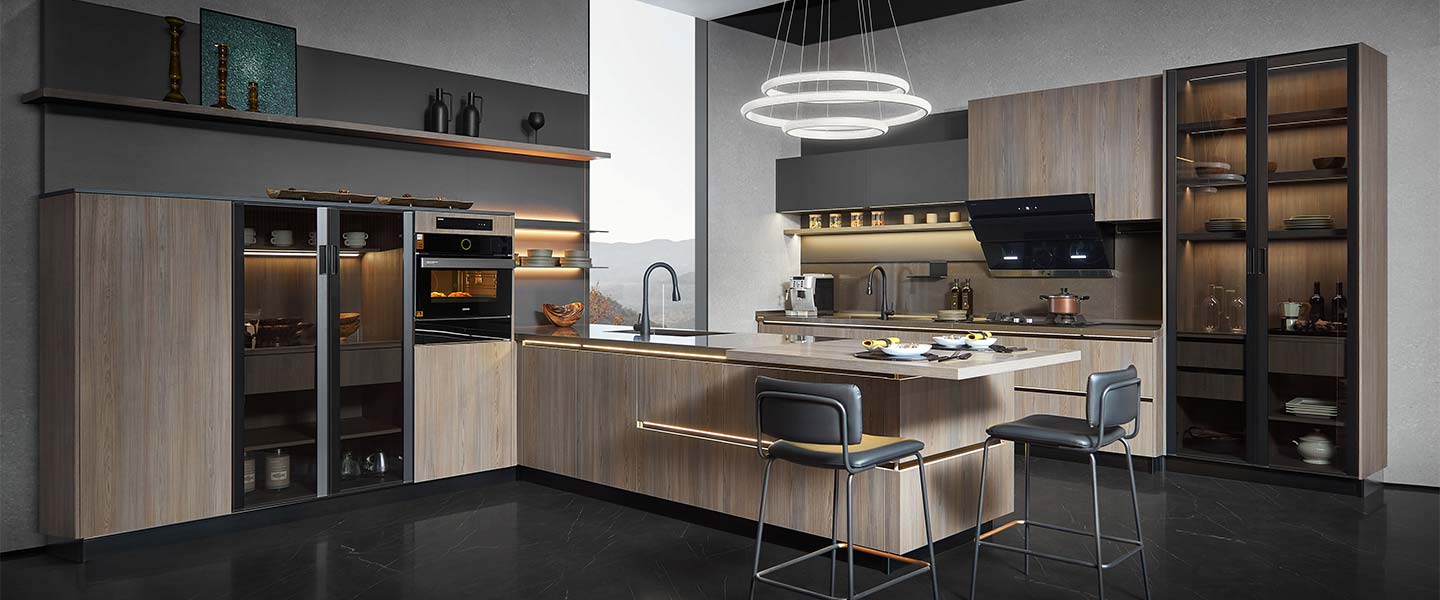
Powerful project management is the force behind a healthy kitchen remodel business. It is the art of organising tasks, resources and the work the team does, in order to accomplish projects according to a timeline, specifications and budget – and leave the client content. Here are some tips that come from years of project management experience in the kitchen remodel industry.
Detailed project planning: Start each project with a thorough plan that defines the scope, schedule, budget and resource needs, as well as potential risks and contingencies. Involve all stakeholders – clients, designers and contractors – in the planning process to ensure that they’re all on board.
Clear communication and documentation: Set up clear ways of communicating, and track project specifications, change orders and approvals in a shared space. This is something that normal project management software can help you with.
Task assignment and resource allocation: Determine who should do what, who is available to do it, and who has the expertise to do it; and ensure that materials, equipment and labour are available and scheduled properly so as not to cause bottlenecks.
Scheduling: Create and maintain a detailed project schedule that identifies milestones, deadlines and dependencies, and routinely review the schedule to reflect any changes and unforeseen events.
Quality control and inspections: Ensure that the contractor operates with strict quality control and performs regular on-site inspections to ensure that work meets the industry standards and client specifications. Timely resolve issues, deficiencies and other quality control matters to preserve the quality of the project.
Risk management: Identify issues that could arise in the course of the project, such as a shortage of materials, bad weather, or a change in building codes – and then outline mitigation strategies to minimise their effect on the timeline and costs of the project.
Change management: Define the procedure for approvals and managing changes to scope, budget or schedule. Inform all the stakeholders of any changes. Approve the changes and enter them in the controls.
Progress tracking and reporting: Monitor and track project progress on a regular basis, comparing performance against the project schedule and budget. Provide periodic progress reports to the client and/or sponsor which keep them informed and involved in the project.
Continuous improvement: Conduct post-project reviews to identify improvement areas and embed lessons learned into the next project. Obtain feedback from clients, team members and other stakeholders in order to refine the process and improve project management practices.
With good project management, you will have a better chance of completing your kitchen remodel projects on time, within budget – and to the quality standards your clients expect, so you can build a successful business.
The future of the kitchen remodel industry
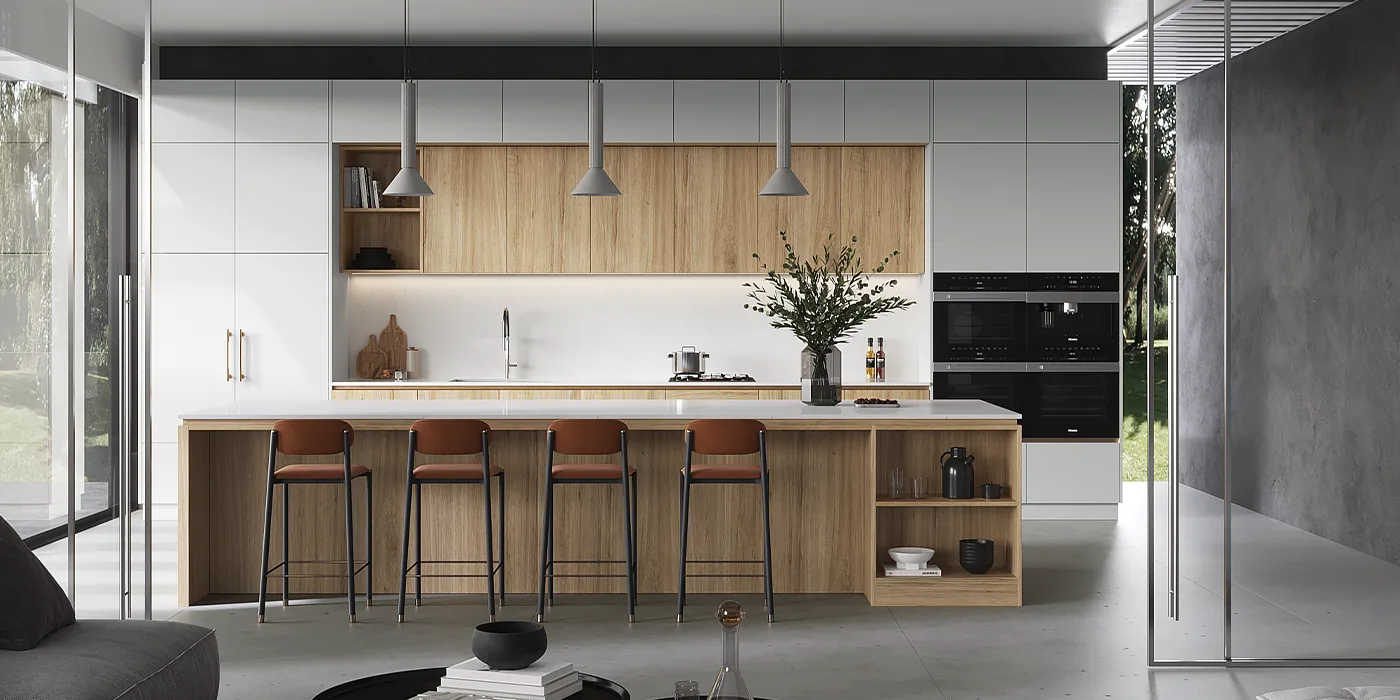
The kitchen remodel industry is going to be exciting. And it’s going to grow. And it’s going to change. And it’s also going to get smarter. For years, homeowners have been wanting their indoor spaces to serve as comfortable, healthy spaces for enjoying their daily lives, as well as being stylish and functional. That’s making the kitchen remodel boom one of the most exciting – and fastest growing – areas of home improvement today, with the changes in the next 10 years likely to be as profound as those that have been seen in kitchens over the past 50. Here are some of the key trends and developments that will shape the future of this exciting industry.
Sustainable, eco-friendly design: Increasing awareness of environmental concerns means there is more demand for kitchens that are designed sustainably and eco-friendly, such as use of recycled materials, energy-efficient appliances, water-saving fixtures, reduction in waste and more.
Integration of smart home : kitchen designs are technology, such as appliances that can be controlled by voice, lights and temperature that can be programmed to adjust automatically, and appliances that are connected to the internet to track energy consumption, which improve the convenience and offer energy efficiency.
Personalisation and customisation: Homeowners want kitchens that are designed with a personal flair to it. This is one of the big trends right now in kitchen remodels. Homeowners want kitchens that are more personalised to their own tastes and preferences. And the way they’re doing that is through custom cabinetry, custom countertops, custom storage, so they can really bring more creativity into the kitchen.
Multifunctional spaces: When the kitchen and dining room are combined into one open-concept living area, the kitchen space shifts into a multifunctional area, where cooking, dining and entertaining can occur. The movement toward multifunctional spaces means that flexible layouts, portable seating and fluidity between zones within the kitchen are becoming increasingly important.
Ageing-in-place designs: The growing segment of the population that is 55 years and older will need more kitchen designs to reduce the challenges of accessibility and ease of use. Lowered countertops, pull-out shelves, ergonomic appliances – all will be more important than before to allow people to live independently and age in place.
Virtual and augmented reality: By adopting virtual and augmented reality technologies, we have the ability to design and plan clients’ kitchen remodels in a virtual environment. A client can virtually experience their kitchen before construction begins, allowing them to make more informed decisions that can prevent costly errors.
Modular and prefabricated solutions: Modular and prefabricated solutions comprising off-site manufacturing of completed sections that can be swiftly joined on-site are also being used to address the increased need for faster and more effective kitchen remodeling services.
Moving forward, those businesses that are modern, sustainable and individualised will be best-suited to keep up with a changing industry and their customers’ needs and wants for years to come.
Conclusion
Running a kitchen remodel business is a demanding but rewarding profession, combining technical skill, artistic imagination and business knowledge. From creating beautiful designs to bringing projects to fruition, this is a career that requires dedication and a drive to create beautiful and functional spaces.
Entrepreneurs and professionals in the kitchen remodeling sector may weather the hurdles and take advantage of the opportunities by following the methods indicated in this article.
Moving forward, embracing innovation and sustainability, and addressing each homeowner’s customised needs will help businesses to stay relevant and competitive. Staying ahead of the curve, for example, by taking advantage of the smart home trend, reducing a home’s footprint and becoming more environmentally responsible, and adapting spaces to help individuals age comfortably in their homes will set kitchen and bath businesses apart as industry leaders, attracting more consumers to their products and services.
Changing people’s lives through memorable experiences and improving the quality of their lives is the goal of a kitchen-remodelling business. By delivering the best projects and building the best client relationships, kitchen-remodelling businesses can turn an ordinary series of rooms into a special place that reflects their clients’ personalities and lifestyles.
Whether you’re a novice entrepreneur preparing to launch a kitchen remodel start-up, or a seasoned pro who’s ready to take your business to the next level, you’ve come to the right place. If you’re serious about building a business, our experts are here to provide specialized advice, industry knowledge, and customized solutions that will help you get there. Because together, we can craft the recipe for your success – and for the homes and lives of your clients! Know more about our cabinet franchise policy here.
